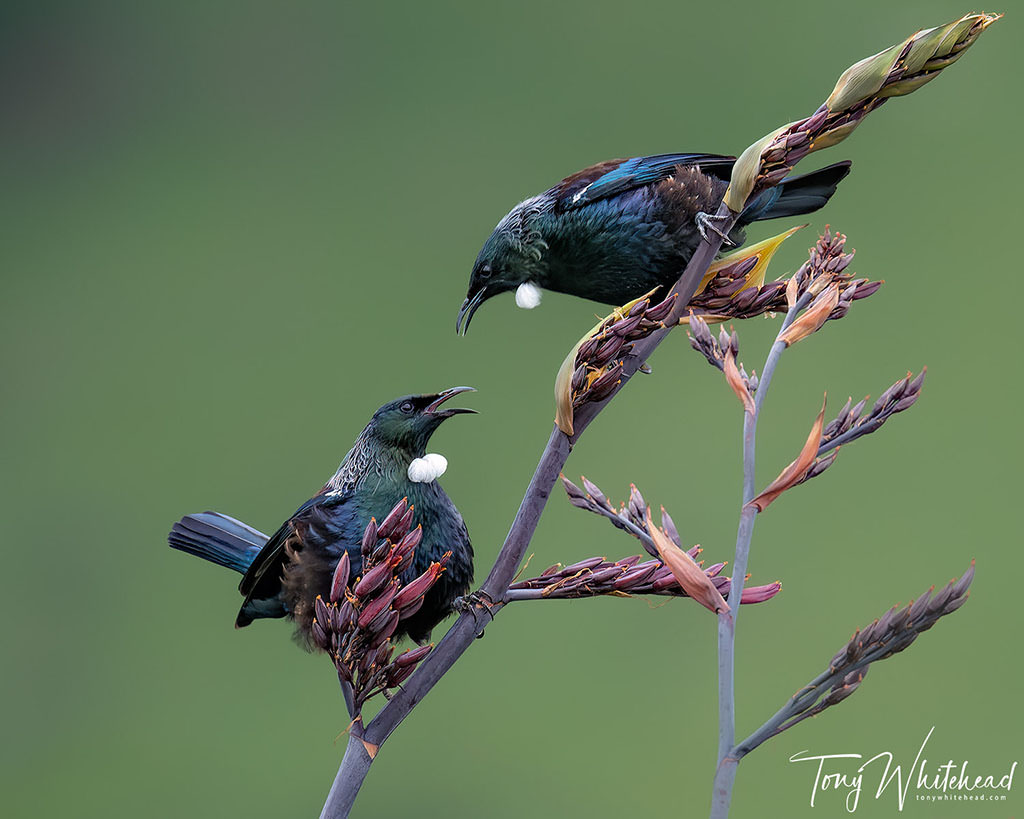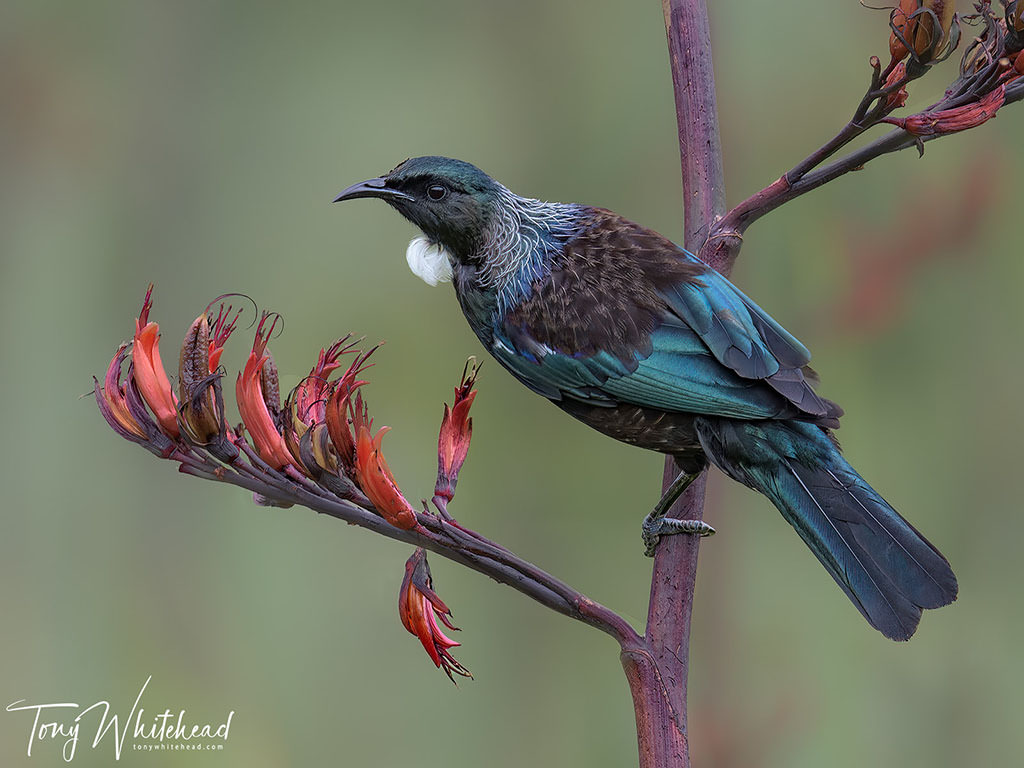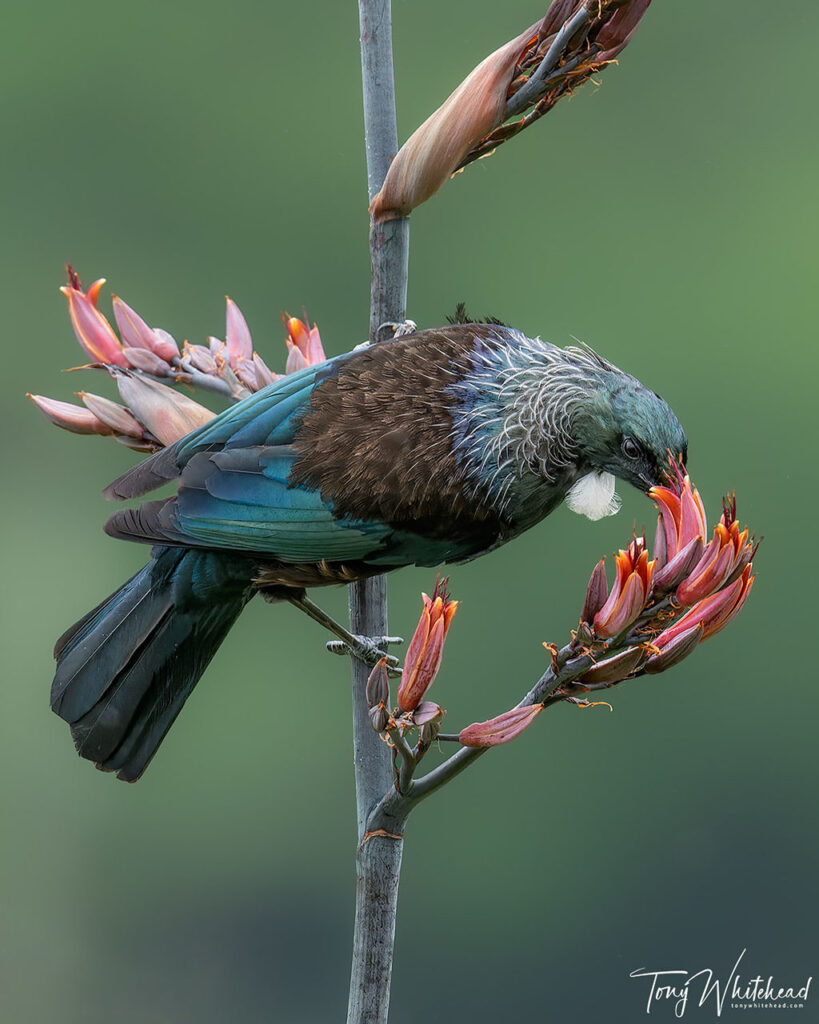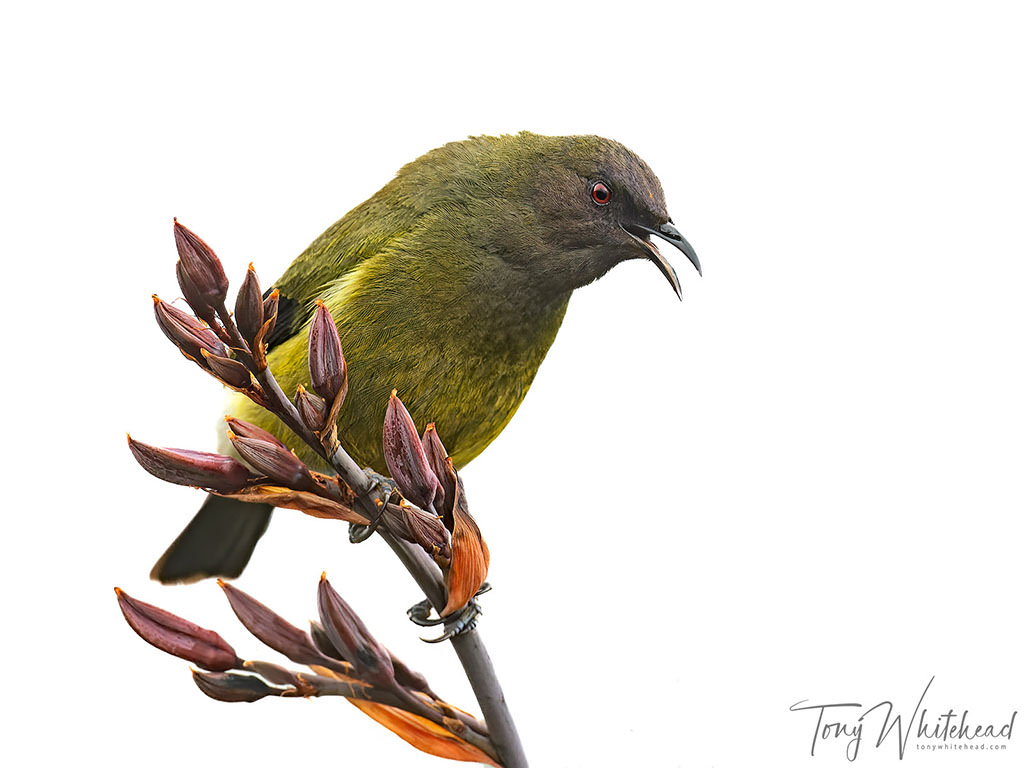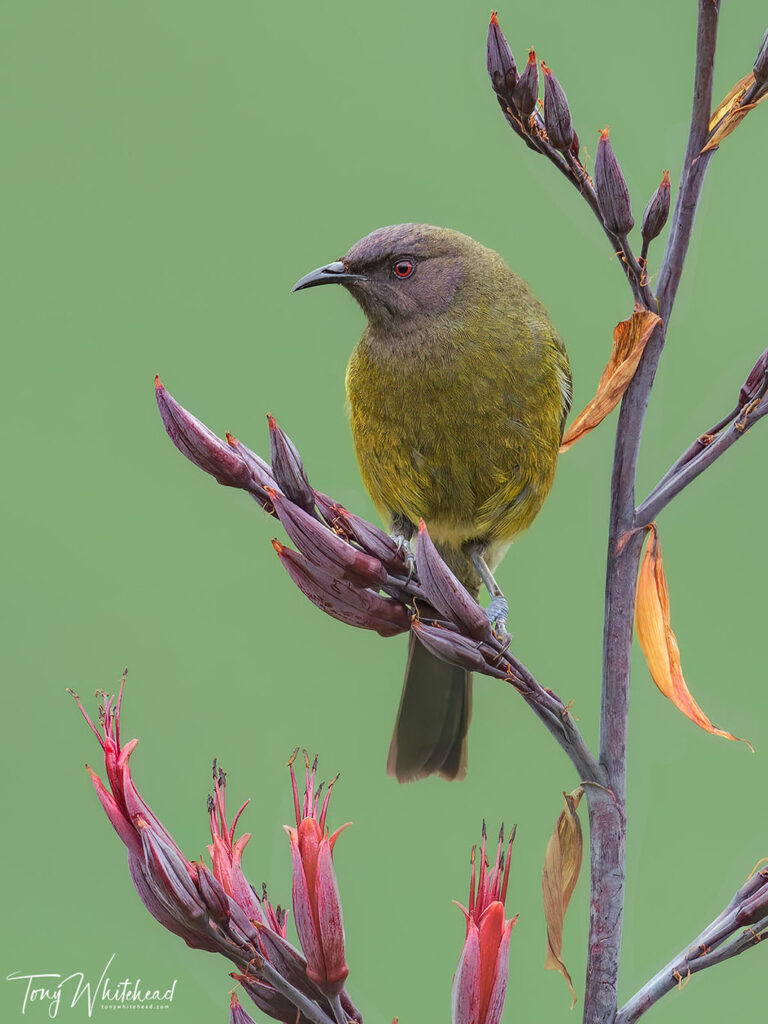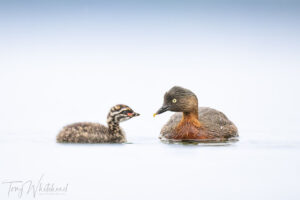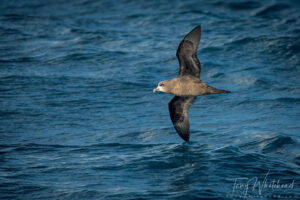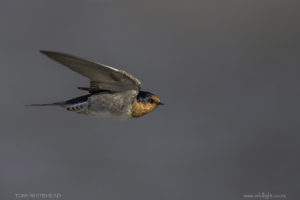I recently had an interesting experience. For the past 12 months I have almost exclusively been using the Nikon Z9, to the point that I have sold all my Nikon F mount gear apart from the D500, 300mm f4PF, 500mm 5.6PF, 70-200mm f2.8 VRii and teleconverters. I have only used the D500 a couple of times usually opting to use the F mount glass with FTZ adaptors on the Z9.
Edin paid a flying visit between field research trips so only had her compact kit with her (D500, 300mm f4PF and TC-14eii). The harakeke/flax is in full bloom with Tui so we headed up to the lake for a session. I offered her my Z9 and Z 800mm f6.4 VR S as any images she got with this combo would be potentially more useful for the work she does with NikonNZ. I geared up with my D500, 500mm f5.6PF + TC14eii giving me the equivalent angle of view of a 1050mm lens onto 21 megapixels.
I had recently got a number of decent images of Tui so wasn’t feeling any pressure to necessarily get anything much but ended up having more fun photographing than I have in a while. As with any analysis the contributors are usually multifactorial. The lack of pressure was one, the company was another, but the biggest contributor was the gear. How could it be that using old gear was more fun than new gear!
Firstly it is smaller and lighter so more comfortable to carry and use. Secondly I am so used to it that it requires little thought to use well. Thirdly, it is simply simpler. The Nikon Z9 is a beast of a camera. Incredibly capable and versatile but it comes with complexity and the need to specifically set it up and adjust focus settings to optimise for certain scenarios. With the D500 I have it set up as I have previously written about and then just use it without needing any on the fly adjustment. The camera does what it does, I know what it does and use it to achieve what I need. The Z9 is smarter and can do more but doesn’t always do what I want it to. I am having to at times watch what it is doing and adjust it until it will do what I need it to rather than adjusting what I do to get the result. With the D500 I just adjust what I do to get it to do what it does.
What did I miss about the Z9? Mainly the full frame viewfinder that I can see well without my glasses on and can use for exposure preview and image review. The smaller Dx format viewfinder of the D500 is just not quite as nice. In fairness the exposure preview is not that significant as I just can work as I always have – setting manual exposure, checking with the inbuilt meter and reviewing the histogram on a test exposure. In flat light at the end of the day I needed to adjust the settings as the light level dipped but this is largely intuitive. The D500 sensor, being essentially ISOless is very forgiving as long as you haven’t blown highlights so a little underexposure isn’t the end of the world.
The Nikon Z9 is an incredibly capable camera but comes with a price to pay, financially and in time. There’s is a lot to learn and time needed to adjust settings to maximise it’s capability. There is a level of work involved to achieve the increased performance over a DSLR. This can complicate the process and detract from the pleasure in certain circumstances, in others it can make the job simpler. Managing the settings to optimise the Z9 is another step in the process and could be seen as a barrier between eye and subject. Abdicating some focus control to the camera and then double checking that it is doing what you need is something that does occupy some attention so can be a distraction.
The bottom line is, after a year, would I feel restricted if I couldn’t use my Z9? In some circumstances definitely. For birds bobbing on water, the eye AF is magic. Subject tracking is helpful for small fast birds (swallows, fantails). The 20 fps is very useful for high speed action sequences. The recall settings function is very useful as I can toggle between action freezing and pan blur during a flight sequence. Having access to IBIS stabilised video using the viewfinder is great and I have managed to capture some video sequences I would never had recorded otherwise. For the birds in flax, there was nothing I missed.
What did I especially like about the D500? In a word, simplicity. Small, light and simple. The 10 fps was more than enough and the smaller file sizes made downloading, reviewing and culling a much quicker exercise.
So what’s the take home message? Don’t get tangled up in gear. You don’t need the latest gear to get results. In fact simpler, older, cheaper gear can be better in certain circumstances and more fun! Something I take solace in as I get older and simpler myself. I’ll definitely be using my D500 more than I have over the past 12 months.
There is no doubt that modern mirrorless cameras are incredible and do some things that we previously would not have dreamed of. Marketing makes these advances seem essential and a magic solution to difficult problems. In some cases that can be true but they are not a universal panacea. They are complicated machines combining mechanical and computing power. They have many settings that can be confusing to understand even when reading the manual. Bird photography is a very specific niche and not necessarily a high priority for camera manufacturers. I suspect many people will buy a new camera expecting immediate amazing results only to be disappointed and frustrated. As always photography requires dedication and commitment to achieve results. With newer cameras a bigger part of this effort needs to be devoted to understanding and adjusting the multitude of settings to the situation. Don’t fall into the trap of feeling that you are hamstrung without the latest gear. Hopefully these images made with a discontinued camera launched in 2016 prove the point.
All photos with Nikon D500 and Nikkor 500mm f5.6PF with TC14eii
